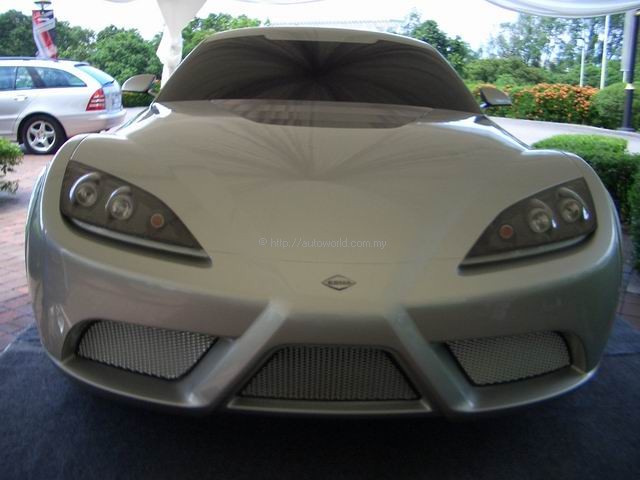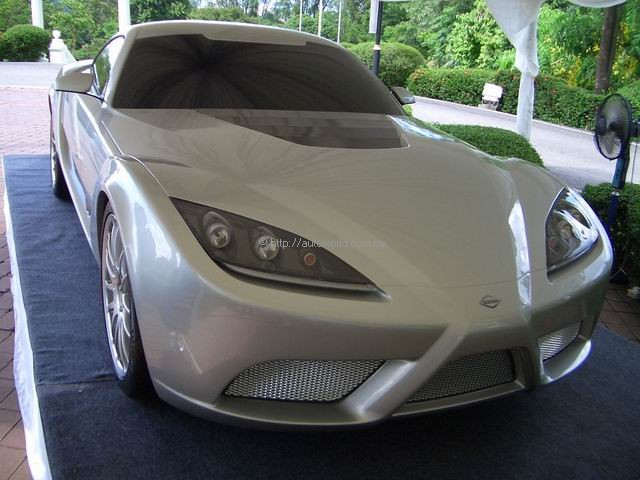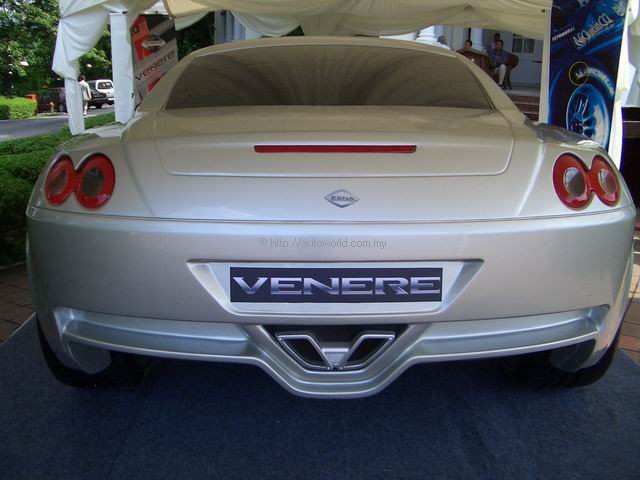ESNA Venere, The First Malaysian Sports Car
Introduction
The ESNA Venera is a sports car that has been designed to offer not only style and exclusivity but also the latest in terms of technology and driver appeal.
ESNASPORTS is committed towards producing technologically advanced lightweight sports cars and have resorted to using the latest in terms of construction technology to achieve this goal.
Carbon fibre composite is the main construction material for Formula One cars because of its lightweight and extraordinary strength and since weight is the biggest enemy of sports cars, the Venere has been designed using the latest weight saving materials including chromoly alloys, aluminium honeycomb and super strong carbon fibre. The car steps into the ring tipping the scales at 1,080kg.
It also features a technologically advanced six-cylinder 3.0 supercharged engine and double wishbone suspension on all four corners to ensure that the driver has the best in terms of power and handling. The projected top speed is 300km/h.
The front-engine and rear-wheel drive layout was chosen because of the inherent advantages the layout offers in terms of balance and packaging.
Design
The Venere has been sculpted to look elegant yet sporting. The graphic of the front design mimics sports cars from the 1930s with its long bonnet and wheelarches that melt into stepping boards.
Bonnet V-Line can be traced from the grille and it widens towards the A-Piller with black air-vent serving aesthetics as well as cooling functions. The headlamps are positioned on the stylized front fenders that end where the side air vents begins.
The side has been kept clean with minimal detailing. The wheel-hugging shoulder line and character line which strokes upwards from the side vents give the car a sense of movement.
The glass area have been kept slim to create a sense of aggression while the roof will also incorporate an unpainted carbon fibre section which gives the impression of the front windscreen extending into the roofline. This helps create a sense of lightness that adds elegance to the shape.
Carbon fibre air splitters are placed in front and under the rear bumper to help manage under body airflow and improve the car’s aerodynamic performance.
The distinctive front projector lamps and unique rear lens help to give the car a sense of completeness where many small-volume producers resort to using minor parts from other manufacturers.
With an expected top speed of 300km/h, the design will undergo wind tunnel testing to validate some of the design hypothesis and this will be done to ensure that the car remains stable even as the vehicle approaches its speed limitations.
The interior will feature the latest in terms of creature comfort and aesthetics. While it cannot be described as spacious in absolute terms, the Venere is spacious when compared to other sports cars.
Engine
The 3.0 motor will enjoy added benefit breathing through a supercharger. While the detail has yet to be finalized, it is expected to have variable valve timing and a high redline.
Power output is expected to be around 300 to 350 bhp and this is considered sufficient to propel the car to a top speed of around 300km/h.
A choice of six-speed manual and automatic gearboxes will allow the driver to choose a car that better suits their driving style and preferences.
Suspension
Double wishbone suspension layout will be used to ensure that the car is endowed with class leading ride and handling characteristics. The very wide tracks front and rear ensures the Venere will attack corners with confidence.
The packaging and suspension tuning for the car will be carried out locally and a well-known international partner is expected to participate in the process.
Construction
In their effort to reduce mass, the car will feature extensive use of carbon fibre, chromoly alloy and aluminium honeycomb.
The body will be made entirely out of carbon fibre and different parts will be made using different techniques, depending on their purpose and the amount of load and stress the parts will have to endure.
Underneath, the chassis will be chromoly spaceframe with carbon fibre passenger tub. The carbon tub will also feature aluminium honeycomb floorpan and the chassis is expected to offer class leading stiffness and rigidity.

























